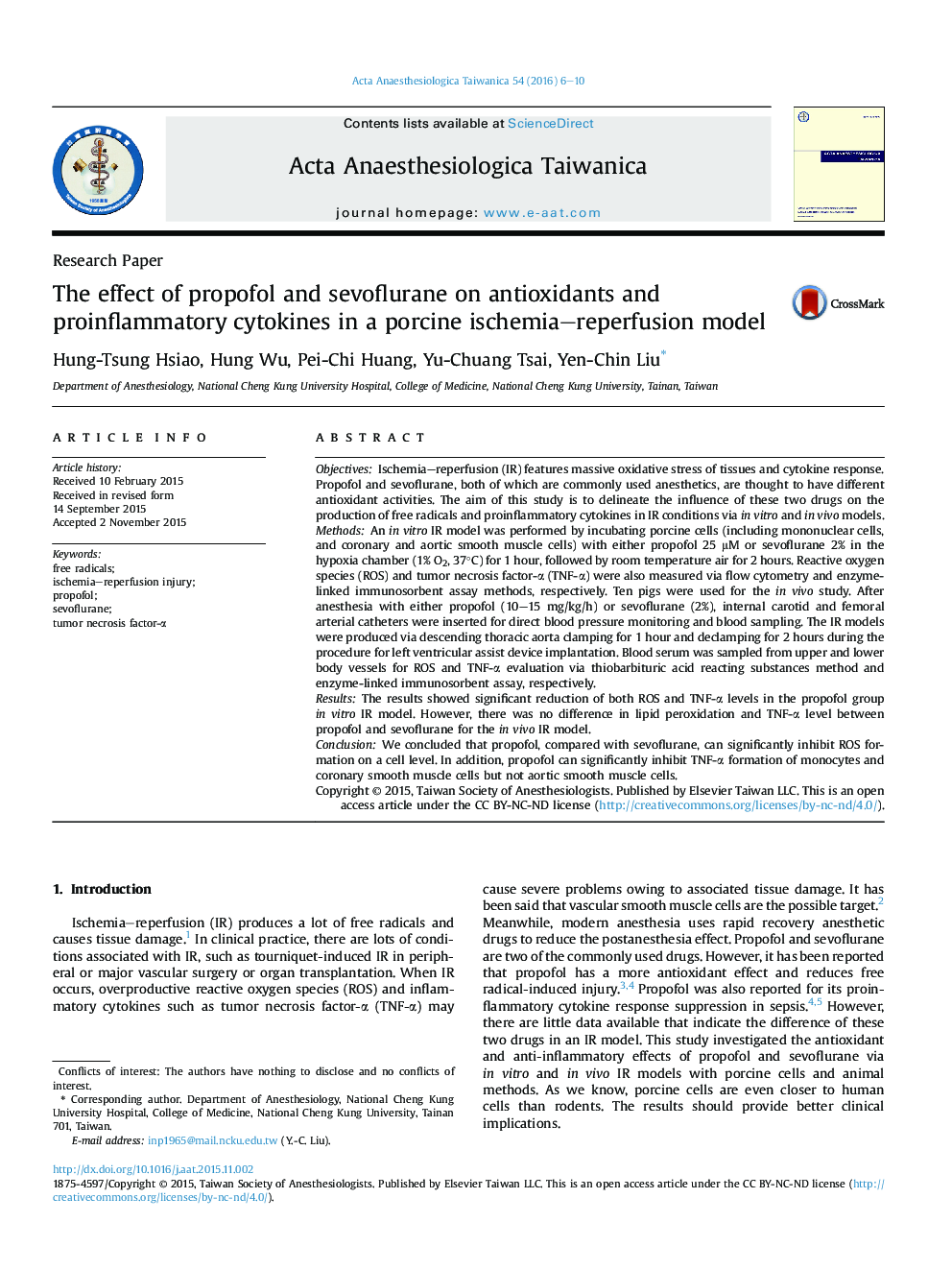| کد مقاله | کد نشریه | سال انتشار | مقاله انگلیسی | نسخه تمام متن |
|---|---|---|---|---|
| 2741383 | 1148525 | 2016 | 5 صفحه PDF | دانلود رایگان |
ObjectivesIschemia–reperfusion (IR) features massive oxidative stress of tissues and cytokine response. Propofol and sevoflurane, both of which are commonly used anesthetics, are thought to have different antioxidant activities. The aim of this study is to delineate the influence of these two drugs on the production of free radicals and proinflammatory cytokines in IR conditions via in vitro and in vivo models.MethodsAn in vitro IR model was performed by incubating porcine cells (including mononuclear cells, and coronary and aortic smooth muscle cells) with either propofol 25 μM or sevoflurane 2% in the hypoxia chamber (1% O2, 37°C) for 1 hour, followed by room temperature air for 2 hours. Reactive oxygen species (ROS) and tumor necrosis factor-α (TNF-α) were also measured via flow cytometry and enzyme-linked immunosorbent assay methods, respectively. Ten pigs were used for the in vivo study. After anesthesia with either propofol (10–15 mg/kg/h) or sevoflurane (2%), internal carotid and femoral arterial catheters were inserted for direct blood pressure monitoring and blood sampling. The IR models were produced via descending thoracic aorta clamping for 1 hour and declamping for 2 hours during the procedure for left ventricular assist device implantation. Blood serum was sampled from upper and lower body vessels for ROS and TNF-α evaluation via thiobarbituric acid reacting substances method and enzyme-linked immunosorbent assay, respectively.ResultsThe results showed significant reduction of both ROS and TNF-α levels in the propofol group in vitro IR model. However, there was no difference in lipid peroxidation and TNF-α level between propofol and sevoflurane for the in vivo IR model.ConclusionWe concluded that propofol, compared with sevoflurane, can significantly inhibit ROS formation on a cell level. In addition, propofol can significantly inhibit TNF-α formation of monocytes and coronary smooth muscle cells but not aortic smooth muscle cells.
Journal: Acta Anaesthesiologica Taiwanica - Volume 54, Issue 1, March 2016, Pages 6–10
